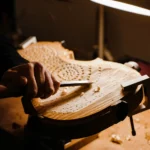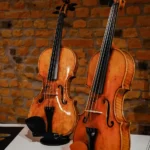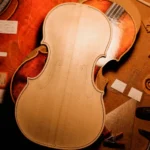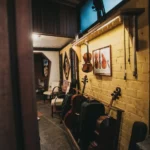Where Was The Violin Invented?
Back to BlogWhen thinking about the violin, the first thing that comes to our mind is the greatest performances and orchestras playing in those beautiful theatres. But before that, actually, way before, how did the violin get there? Where was this instrument invented? Who was responsible for making history with this stringed instrument?
The violin is one of the most amazing instruments in the world and has had a very interesting history and a profound impact on the history of music as well. We already talked about violin history, but today we are discussing who created and developed one of the most popular classical instruments known.
Let’s begin with where did violin-making history start?
The classical instrument as we know it emerged in the 16th century in northern Italy. The spot had a great role in maintaining the tradition not just through the years but also through centuries. As it still is, the Lombardy region was rich in the particular type of wood Maple and spruce, which coincidently is most favored by violin makers then and since. The city of Brescia, located at the foot of the Alps, and Cremona were pioneering in violin-making history. Still, Cremona had the advantage of being home to the most famous luthiers of all time.
The first records and the invention of a violin
Violin history starts a long time ago: derived from the name fiddle, bowed stringed musical instruments that evolved during the Renaissance, the medieval fiddle, the lira da braccio, and the rebec, the violin didn’t just appear overnight. It’s hard to say where and when exactly since so many things were happening in different parts of the world, but what we do know today is that there are many different instruments developed by various cultures around the world to be used for celebrations, gatherings, etc or just for entertainment.
According to the Vienna Symphonic Library, the term “violin” evolved from the word viola, meaning “small stringed instrument” rather than “small viola”.
And the ancestors of the violin were one of them!
The painting of the Madonna of the Orange Tree in 1530 is the first record of a violin. Gaudenzio Ferrari, a Northern Italian, painted it. Certainly, the painting shows an instrument slightly different from our violin, known today, but as we all know the instrument went through several changes and improvements over the decades.
Most likely, the violin was originally invented in Northern Italy in the early 1500s! And now comes the question: Who created the violin?
Once more, this is not easy to define. Some scholars believe the best violinists were playing the classical instrument during the latter part of the previous century. And the discussions go on and on. However, the triumph theory credits Andrea Amati as the inventor of the violin, most likely for being the maker of the oldest violin in existence. (it can be seen at The Metropolitan Museum of Art.)
On the other hand, some speculate about Gasparo di Bertolotti being the actual inventor of the instrument. Bertolotti was and an incredible artisan who lived in Brescia around 1540, he had talents and was an expert double bass player and also created many stringed instruments, of which some have survived and still exist. But the legacy established by Amati is well documented and filled with famous violists.
The violin-making development to our modern instrument also has a long story
The earliest known mural painting of the violin was created in the year 1535. It can be found in the Saronno Cathedral, located in Lombardy, which happens to be the region that hosts Brescia and Cremona, the two cities that were responsible for bringing the violin to the spotlight.
The design of the violin was standardized during the 16th century. Due to the “mass produce” of stringed instruments, Andrea Amati supposedly had to make to fill the order placed by Catherine de Medici in 1560.
The French queen, the regent, commissioned Amati to make a variety of string instruments for the Royal Ensemble. The right amount is unknown, but it is thought that the scale of work required that a form and basic construction of the “modern violin” was created.
A wooden soundbox with two F-shaped apertures. Tuned to perfect fifths, four strings stretched along the instrument’s neck, where they were tightened with pegs. These were the characteristics of Amati’s work, which he later passed on to his family, resulting in the tradition of violin-making in Cremona.
The succession extended to the third generation, with Girolamo’s son, Nicolò, who became the maestro to two of the most celebrated violin makers: Andrea Guarneri and Antonio Stradivari.
The violin-making rising
During the 17th century, the instrument became more important in the orchestra when composers like Claudio Monteverdi included it in their compositions. Following the example, big composers like Antonio Vivaldi, Franz Joseph Haydn, and Niccolò Paganini kept using the sound of stringed instruments.
While in the luthier’s scenario, the violin-making profession grew, and besides the great Stradivari, we had other important names like Bergonzi, Guarneri, and Ruggeri, who also continued the tradition established by the Amati family.
Sadly, every story has its dark days, and to the traditional handcrafted art of violin-making, the troubled days arrived in the late 19th century with the popularity of mass production/industrialized instruments. The world was fascinated by the new industries, and with this fast-selling less time was spent on production and more on numbers.
The traditions of Stradivari and Guarneri were lost, and it seemed that the handmade instruments would be replaced. Until the sun started to rise again, violin-making went through a rejuvenation period, and nowadays, we have schools of violin-making, competitions, and events where craftsmen can compare and improve their craft all over the world!









